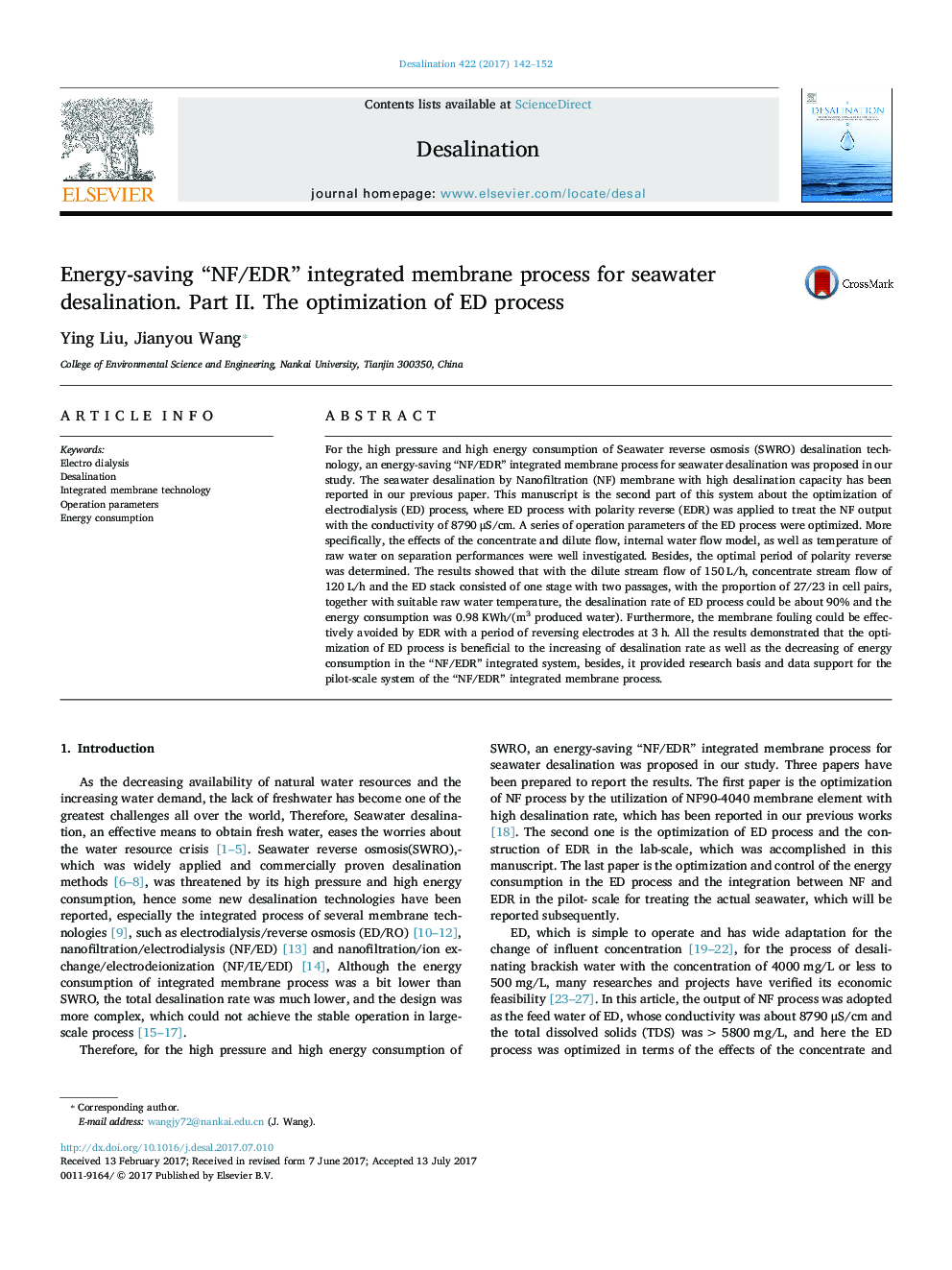| Article ID | Journal | Published Year | Pages | File Type |
|---|---|---|---|---|
| 4987599 | Desalination | 2017 | 11 Pages |
Abstract
For the high pressure and high energy consumption of Seawater reverse osmosis (SWRO) desalination technology, an energy-saving “NF/EDR” integrated membrane process for seawater desalination was proposed in our study. The seawater desalination by Nanofiltration (NF) membrane with high desalination capacity has been reported in our previous paper. This manuscript is the second part of this system about the optimization of electrodialysis (ED) process, where ED process with polarity reverse (EDR) was applied to treat the NF output with the conductivity of 8790 μS/cm. A series of operation parameters of the ED process were optimized. More specifically, the effects of the concentrate and dilute flow, internal water flow model, as well as temperature of raw water on separation performances were well investigated. Besides, the optimal period of polarity reverse was determined. The results showed that with the dilute stream flow of 150 L/h, concentrate stream flow of 120 L/h and the ED stack consisted of one stage with two passages, with the proportion of 27/23 in cell pairs, together with suitable raw water temperature, the desalination rate of ED process could be about 90% and the energy consumption was 0.98 KWh/(m3 produced water). Furthermore, the membrane fouling could be effectively avoided by EDR with a period of reversing electrodes at 3 h. All the results demonstrated that the optimization of ED process is beneficial to the increasing of desalination rate as well as the decreasing of energy consumption in the “NF/EDR” integrated system, besides, it provided research basis and data support for the pilot-scale system of the “NF/EDR” integrated membrane process.
Related Topics
Physical Sciences and Engineering
Chemical Engineering
Filtration and Separation
Authors
Ying Liu, Jianyou Wang,
